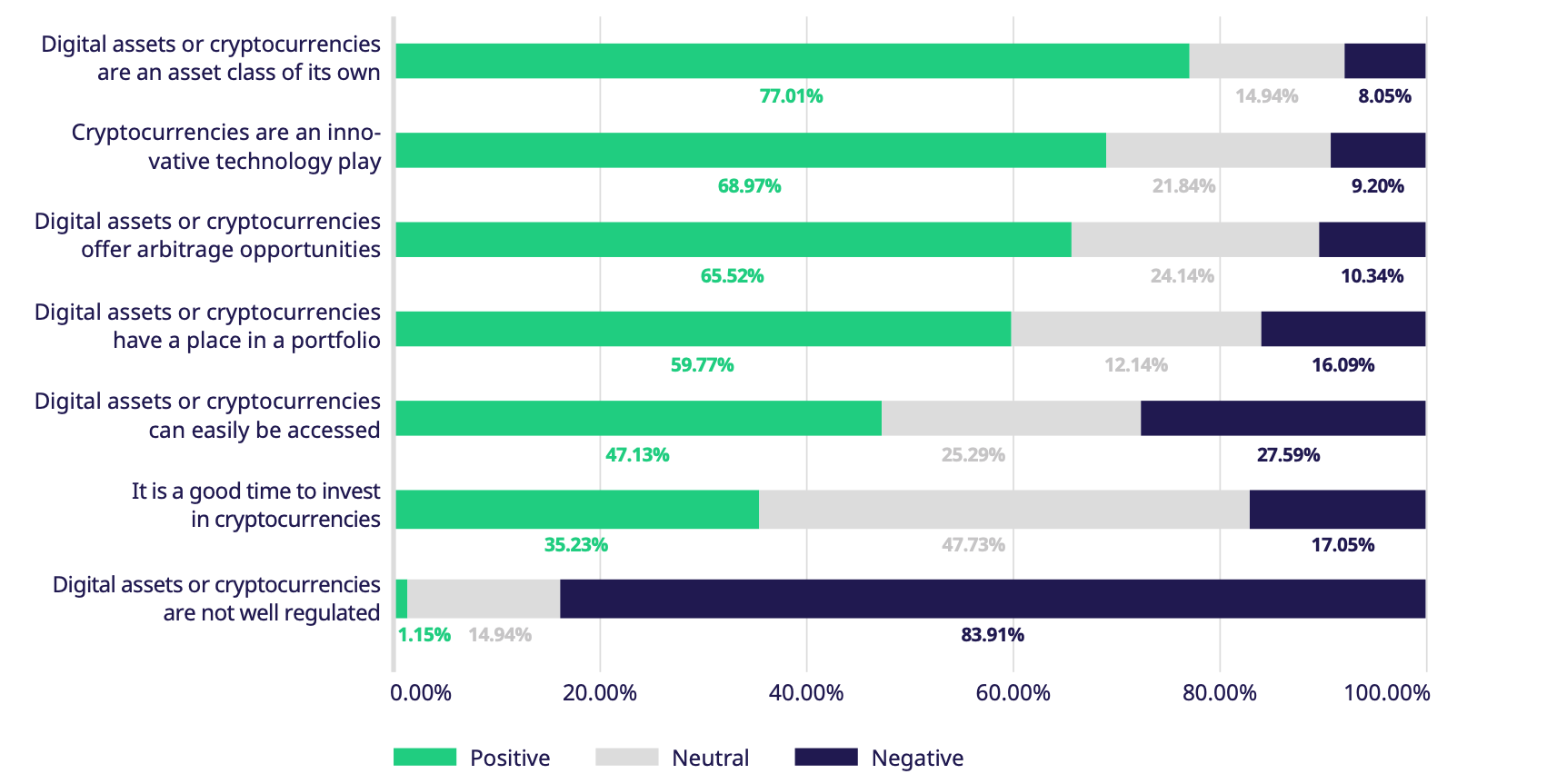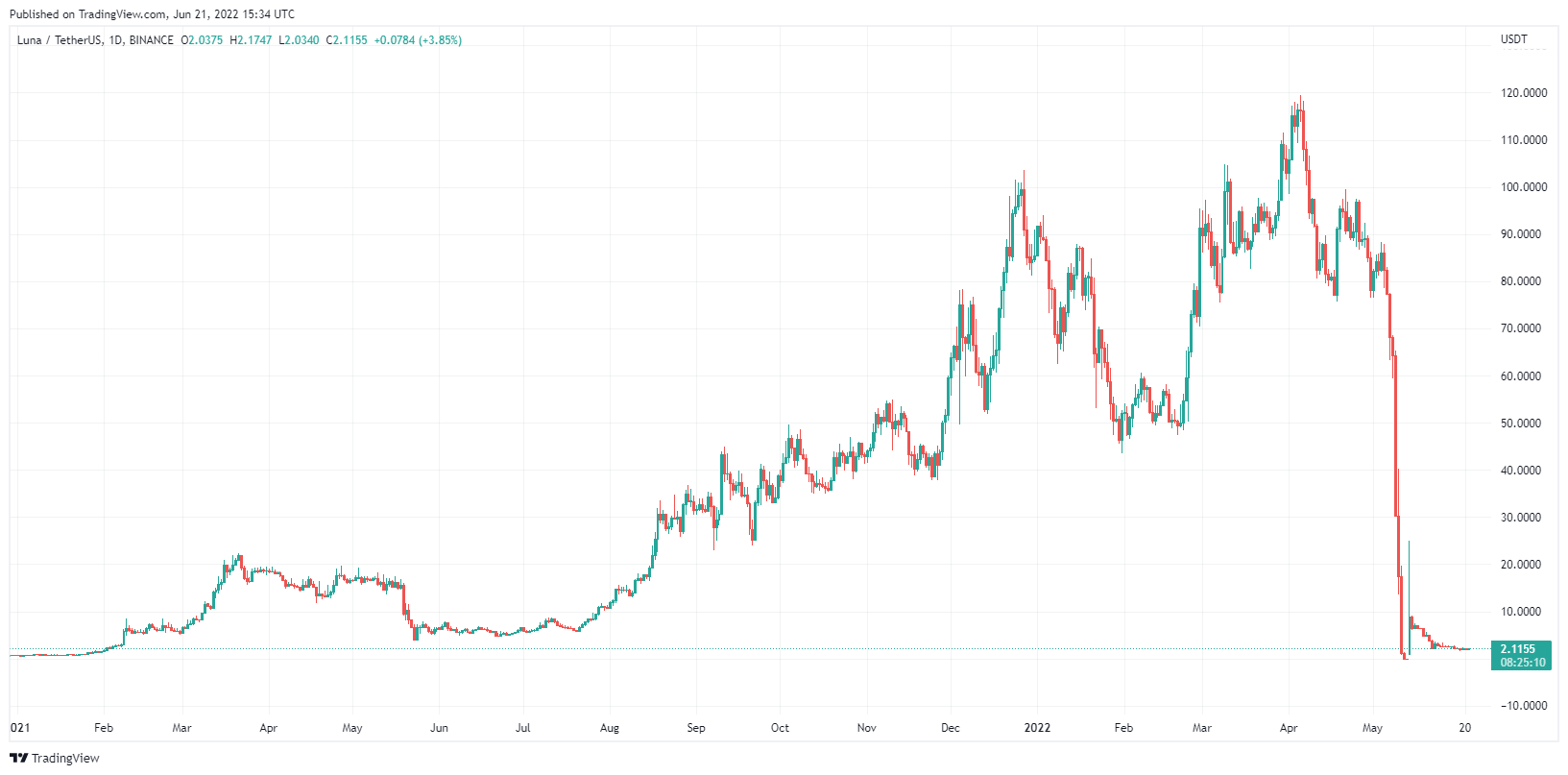After nearly two years of rising prices, the crypto bull market is coming to an end in line with the Federal Reserve's change in direction. A comprehensive review of the third market cycle in the space, blockchain innovations, institutional adoption, and a look into the future of digital assets.
Towards the end of 2020, after the Covid shock and in line with first new emerging use cases on the blockchain infrastructure, a new crypto bull market was born. In December 2020, after 3 years of bear market, the alpha Bitcoin managed to break through its old all-time high at $20,000 from 2017 for the first time. A lot has happened since then: Bitcoin and other cryptocurrencies have recorded new all-time highs and the blockchain infrastructure has grown up a bit again. However, as always in such phases, there were exaggerations and the crypto market is currently paying for these capers with its ongoing harsh price correction.
A review of crypto industry developments and a look at the current price correction, including an outlook on the potential future of the field.
2020 - Bitcoin wakes up from the bear market
The COVID-19 crisis and subsequent quantitative easing (QE) measures by the U.S. Federal Reserve led to an unprecedented expansion of the money supply in 2020. This increased investors' appetite for risk, with some also considering the new asset class of digital assets. And so, shortly after its inflation rate was cut in half for the third time, Bitcoin saw a premiere: U.S. software maker MicroStrategy became the first publicly traded company to announce it would diversify its assets into Bitcoin.

The company's investment quickly expanded, with the true impact hidden in a new narrative for the digital asset. MicroStrategy became a successful poster child for adopting bitcoin as an alternative to gold, which should be part of every company's investment strategy. Public appearances and private conversations by CEO Michael Saylor reinforced this narrative; just a few months later, car manufacturer Tesla was also convinced. Paypal and other payment providers, as well as Wall Street banks, have since incorporated the largest cryptocurrency into their services, and countless other developments have led to greater attention on cryptocurrencies in general.
First germs of Web 3.0
In parallel with the developments in the Bitcoin ecosystem, the field of decentralized financial applications was born on the largest smart contract-enabled blockchain Ethereum. This made it possible to settle financial transactions on a new level directly among participants (P2P). Thanks to its permissionless nature, anyone could use DeFi applications. Decentralized trading venues and lending platforms emerged, to which liquidity could be lent or borrowed against the deposit of crypto collateral with an interest rate curve created freely by supply and demand.
Through the integrated Automated Market Maker protocols (AMM) - which are a central component of blockchain-based exchanges - it was also possible from this point on for anyone to participate in liquidity pools and thus receive a portion of the trading fees of that pool. Bitcoin and other cryptocurrencies could be deposited as collateral in credit protocols to borrow against and otherwise invest. With the emergence of various DeFi platforms, a battle for liquidity ensued, with inflationary token issuances by each platform to increase its appeal. Over time, countless DeFi applications emerged on various blockchains, which sought to attract liquidity and users through ever higher distributions of their own protocol tokens.
Non-fungible tokens (NFTs)
Aside from crypto-specific investment funds and interested retailers, however, the DeFi space did not attract a large audience from behind the scenes. Collectors, artists, gamers, individualists, cultists, and other individuals found their blockchain use case via another development that was on the horizon. Following on from Memecoins, the ERC-721 standard - a non-fungible token variant on the Ethereum network - found a use case that appealed to an expanded group of blockchain users. It was the birth of NFTs, a genre that went unnoticed for a long time but continued to drive cryptohype.
Individual tokens could be linked to digital objects. Pictures, the most common example, could from then on be unalterably attributed to a user via the wallet address. Limited collections sold like hot cakes among digital collectors, and since trading platforms were not long in coming, a marketplace soon emerged on which daily sales of several hundred million dollars were recorded. The hype led to countless new "limited" collections being thrown onto the market on a daily basis. Further NFT use cases in games and in the metaverse further fueled the trend.

Blockchain infrastructure is reaching capacity limits
Rapid growth in DeFi and NFTs led to congestion on the Ethereum blockchain, causing transaction fees to skyrocket. The blockchain trilemma had struck and new offloading options for the increased demand for blockchain capacity were needed.
It was the birth of alternative smart contract platforms as well as Layer 2 solutions built on the Ethereum blockchain as the ledger. New blockchain platforms emerged, most of which were Ethereum compatible, and so the successful DeFi and NFT applications could be cloned right away on the new chains. And they guessed it: to bring users and validators onto the new blockchains, native tokens were launched for almost every new solution, which could be used mainly for transaction fees, but of course also served as a means of exchange and speculation. In turn, the clones of the successful applications had their own tokens, which diluted the field by further issuance.
Institutional adoption
The euphoria around digital assets, driven by the new use cases, took Bitcoin and all the other cryptocurrencies into new spheres. An asset class of its own sprang from its infancy, and the traditional financial world also wanted a piece of the digital pie. The listing of Bitcoin futures and options on U.S. exchanges was followed by the first U.S.-listed Bitcoin ETF in October 2021. An accolade for the oldest cryptocurrency and a starting point for many major U.S. banks to offer digital asset services to its customers.

A daily growing supply meets a limited demand
The market was greedy, the demand huge, and the supply even more massive. In November 2021, a month after the long-awaited Bitcoin ETF, the total market capitalization of the just over 30,000 outstanding officially counted tokens was just over $3 trillion - with Bitcoin, which has since risen to over $65,000, accounting for just over a third of the total market capitalization. 11 months earlier, we stood at a Bitcoin price of $20,000 and a total market capitalization of $750 billion.
Every day, tens of millions worth of new tokens were issued, new NFTs were created, and venture capitalists' allocations were unlocked. DeFi protocols paid out their own token returns in the 3-digit percentage range to tie up vital liquidity. On top of that came the usual block rewards from miners, which were already running at around $60 million per day just for Bitcoin. Of course, no one could say when the music would stop playing. However, the futility of the projects, as well as the sheer infinity of new digital tokens seeking their buyers every day, pointed to an exaggeration phase.
Purifying thunderstorm
Just in November 2021, most cryptocurrencies also recorded their highest price to date, which was a good 80% higher than today. This was followed by what had to come at some point: the market could no longer absorb the daily newly created supply. The overturned trend has undoubtedly accentuated in recent months in line with the overall market. The general risk-off behavior forced by Quantitative Tightening (QT) was particularly noticeable in the overheated crypto market recently. Even if it hurts, it was probably necessary. Many of the problems that are coming to light are homemade. Too many projects without any real benefit, too much euphoria around Web3, which is still in its infancy, and too many protocols based on ponzinomic models.

The crypto market is in the midst of a cleansing thunderstorm. Larger and prominent names have also been caught up in the maelstrom. The weaknesses of the institutions that have been counted on are no different from the traditional financial market. Too much leverage, lack of diversification, and unrealistic balance sheet management often lead to collapse in stressful situations. In the crypto market, however, no central bank exists to rush to the aid of "too big to fail" market participants and create zombie companies with a non-market interest rate environment. Here, the free market decides who lives and dies. Even if it hurts, this is the only way to create a robust and stable market that is superior to the traditional financial market and is staffed by crisis-resistant market participants who (must) have their risks under control.
Crypto has come to stay
The shambles of the market correction is huge at first sight. But there is light at the end of the tunnel: if you direct your attention to the fundamental developments in the blockchain industry, you can undoubtedly see tremendous progress. The last 2 years have been wild and the hangover from the party commensurate. Nevertheless, the evolved infrastructure around crypto and its derivatives is remarkable. Venture capitalists recently invested billions in infrastructure and now an estimated 300 million people worldwide use crypto applications. With a growth rate approaching 100%, the one billion mark could be surpassed as early as 2024. The combination of ingredients that have been added has the potential to revolutionize interactions on the Internet. Via tokens, users are directly integrated into an ecosystem, and this has now also been discovered by renowned companies outside the financial world. The synthesis of blockchain-based applications with Web2 and real-world applications ultimately leads to the metaverse or Web3, an area with unlimited possibilities and enormous potential.
Thanks to continued regulation, the field is visibly merging with traditional finance. This makes perfect sense. Thanks to blockchain-based financial systems, transparent, tamper-free, and efficient settlement systems are emerging that are superior to current financial infrastructures. Markets available 24/7 and risk systems controlled by smart contracts liquidate underfunded credit lines, no ifs, ands, or buts. However, the financial system 2.0 or the Web3 will not exist autonomously. A merger of the respective systems will lead to the greatest benefit over time and usher us into the next era, which can be classified similarly to the emergence of the Internet in the 2000s.




